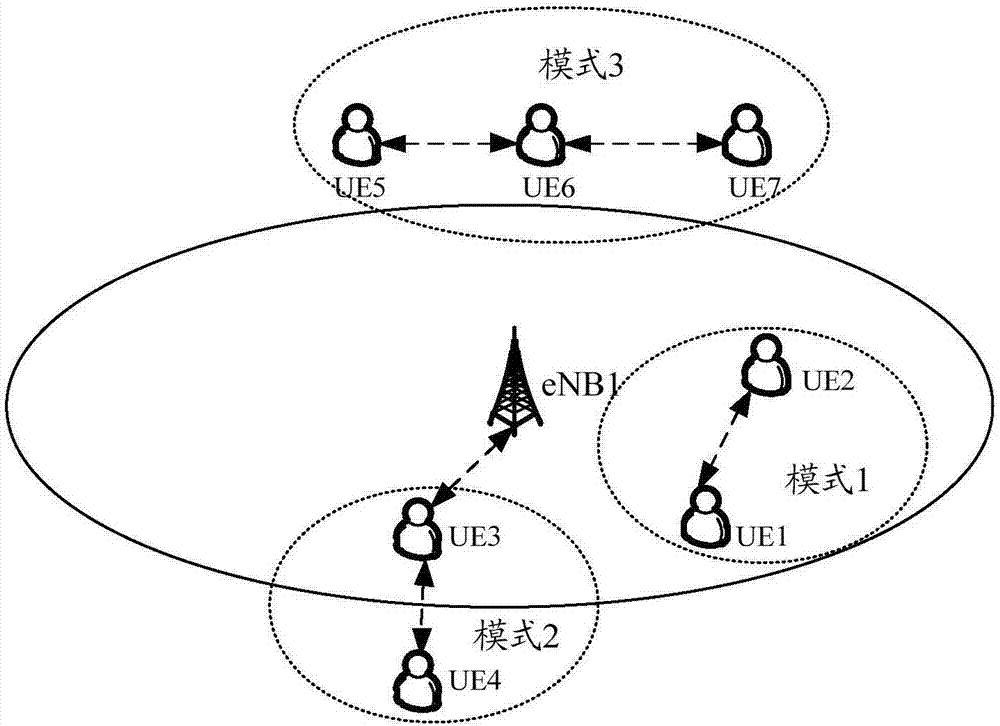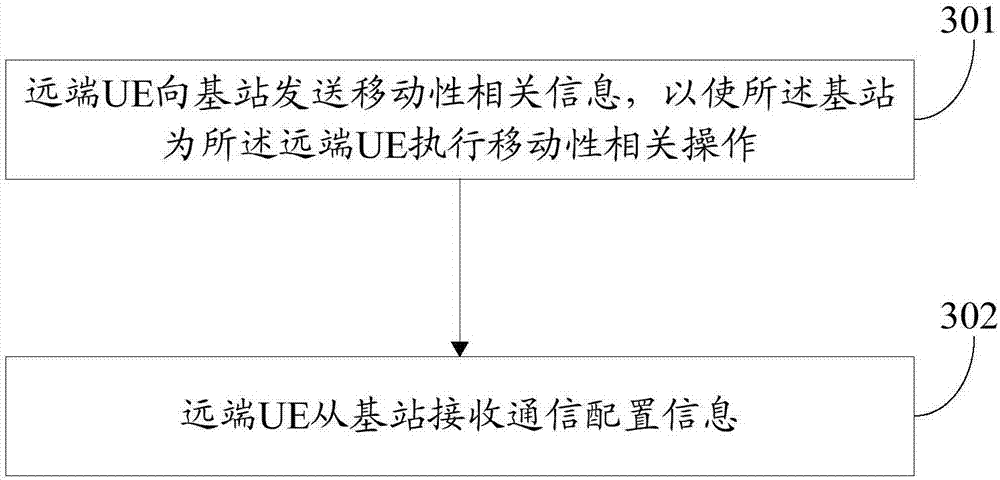Method and apparatus for supporting mobility of remote UE (User Equipment)
A remote user, mobility technology for machine-to-machine/machine-type communication services, electrical components, wireless communications, etc.
- Summary
- Abstract
- Description
- Claims
- Application Information
AI Technical Summary
Problems solved by technology
Method used
Image
Examples
Embodiment 1
[0235] This embodiment describes a mobility support method in a scenario where a remote UE is handed over from a base station to a relay UE. In the scenario of this embodiment, the remote UE directly transmits data with the base station, and then communicates with the network through relay UE relaying, and the serving cell / base station of the relay UE is the same as the original serving cell / base station of the remote UE. Such as Figure 5 As shown, the method of this embodiment includes the following steps:
[0236] Step 501: The remote UE performing data transmission with the base station discovers the accessible relay UE through the relay discovery process. Optionally, if the remote UE finds multiple accessible relay UEs, the PC5 link with the best link quality is selected relay UE. Optionally, the remote UE tends to select a relay UE that has the same serving cell / base station as the remote UE.
[0237] Step 502: Optionally, the remote UE judges that the serving cell / base sta...
Embodiment 2
[0260] This embodiment describes a mobility support method in a scenario where a remote UE is handed over from a base station to a relay UE. In the scenario of this embodiment, the remote UE directly transmits data with the base station, and then communicates with the network through relay UE relaying, and the serving cell / base station of the relay UE is different from the original serving cell / base station of the remote UE. Such as Image 6 As shown, the method of this embodiment includes the following steps:
[0261] Step 601: The remote UE that performs data transmission with the base station discovers the accessible relay UE through the relay discovery process. Optionally, if the remote UE finds multiple accessible relay UEs, the PC5 link with the best link quality is selected relay UE.
[0262] Step 602: Optionally, the remote UE judges that the serving cell / base station of the connected relay UE is different from its own serving cell / base station. Specifically, the remote U...
Embodiment 3
[0295] This embodiment describes a mobility support method in a scenario where a remote UE switches from a relay UE to a base station. In the scenario of this embodiment, the remote UE communicates with the network through relay UE's relay forwarding, and then directly transmits data with the base station. The serving cell / base station of the relay UE is the same as the target serving cell / base station accessed by the remote UE. . Such as Figure 7 As shown, the method of this embodiment includes the following steps:
[0296] Step 701: Optionally, the relay UE sends a PC5 connection release message to the remote UE to release the PC5 connection between the relay UE and the remote UE. For example, if the relay UE detects that its own power is insufficient, it sends the message . Or, the remote UE detects that the quality of the PC5 link with the relay UE is poor, or the remote UE detects that the quality of the PC5 link with the relay UE is lower than a certain threshold. Optio...
PUM
 Login to View More
Login to View More Abstract
Description
Claims
Application Information
 Login to View More
Login to View More - R&D
- Intellectual Property
- Life Sciences
- Materials
- Tech Scout
- Unparalleled Data Quality
- Higher Quality Content
- 60% Fewer Hallucinations
Browse by: Latest US Patents, China's latest patents, Technical Efficacy Thesaurus, Application Domain, Technology Topic, Popular Technical Reports.
© 2025 PatSnap. All rights reserved.Legal|Privacy policy|Modern Slavery Act Transparency Statement|Sitemap|About US| Contact US: help@patsnap.com



